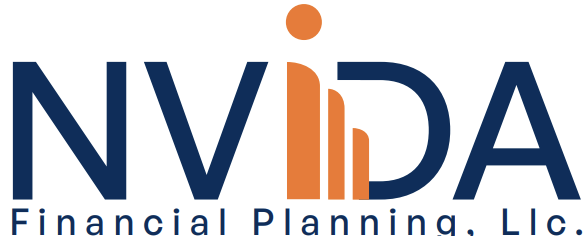Weekly Market Commentary | October 28th 2024
Week in Review…
The major indices exhibited mixed performance for the week ending October 25, 2024.
- The S&P 500 declined by 0.96%, ending its six-week winning streak
- The Dow Jones Industrial Average fell by 2.68%, also recording its first weekly loss after six consecutive weeks of gains
- The tech-heavy Nasdaq Composite continued its upward trajectory, finishing the week 0.14% higher and extending its winning streak to seven weeks
- The 10-Year Treasury yield concluded the week at 3.90%

The Federal Reserve’s latest Beige Book, which reports on current economic conditions across the 12 Federal Reserve Districts, indicated stagnant growth in most regions over the past month. Manufacturing continues to show weakness, and consumer data revealed that shoppers across all income levels, including higher-income brackets, are increasingly seeking lower-priced alternatives for goods and services.
U.S. initial jobless claims decreased by 15,000 to 227,000, while continuing claims rose to 1.897 million for the week ending October 12. Additionally, U.S. Purchasing Managers’ Indices (PMIs) suggested strong economic growth at the start of the fourth quarter, with both Services PMI and Manufacturing PMI advancing in October.
The University of Michigan’s consumer sentiment index increased to 70.5 for October, up from 68.9 in the previous month. With inflation expectations easing, consumers are expressing optimism about the future of the economy. Economists will be closely monitoring this trend to see if it continues.
Existing home sales in September declined 1% from the previous month to a seasonally adjusted annual rate of 3.84 million, marking the lowest level since October 2010. In contrast, new home sales rose to their highest levels since May 2023, increasing 4.1% to 738,000 units on a seasonally adjusted annual basis. The average price of new homes has decreased by approximately 3% over the past year, while new home completion has increased by 40% compared to pre-pandemic levels.
Spotlight

Growth of Defined Outcome ETFs
Defined Outcome ETFs, also known as buffer ETFs, offer investors predetermined range of outcomes over specific periods, blending downside protection with upside potential. These funds have gained popularity among risk-conscious investors navigating volatile markets.
Growth of Assets and Funds
The popularity of Defined Outcome ETFs has surged in recent years, driven by market volatility and investors’ desire for more predictable returns. Per Morningstar, “Assets in defined outcome ETFs have grown to $22 billion as of January 2023 from approximately $183 million as of December 2018. The number of products jumped to 169 ETFs (in 2023) available from fewer than 10.” This rapid growth was attributed to several factors:
- Striking a balance between equity volatility and fixed income returns
- Offering some downside protection while allowing for some upside participation
- Providing the liquidity, transparency, and tax efficiency inherent in the ETF structure

Types of Defined Outcome ETFs
While a detailed examination of their structural design is beyond the scope of this discussion, Defined Outcome ETFs generally fall into three primary categories:
- Funds With Upside Cap: These funds buffer a range of losses while capping returns beyond a certain point. This is the most common approach.
- Funds With Partial Upside Exposure: These ETFs provide downside protection by capturing only a portion of positive index returns instead of implementing a cap.
- Downside Floor: This strategy may offer maximum loss protection in an extreme down market with a lower cap on gains which may provide returns higher than CDs or Treasury bills. However, in a market with “average” volatility, it may offer no protection at all.
Some providers also offer fund-of-funds structures aimed at providing more flexibility, albeit with higher fees and fluctuating upside cap.
Cost of Protection
While Defined Outcome ETFs offer attractive benefits, they come with certain trade-offs:
- Higher fees (typically 70-80 basis points above traditional S&P 500 ETFs)
- Most do not pass through dividends from underlying stocks
- Capped upside potential may result in missed gains during strong market rallies
The effectiveness of Defined Outcome ETFs depends on several factors:
- Market Performance: The actual performance of the underlying index or asset during the outcome period
- Buffer Level: The amount of downside protection offered by the ETF
- Cap Level: The maximum return potential of the ETF. It is occasionally referred to as the Cap Rate, though this term has a distinct meaning in the context of real estate investments.
- Timing: When an investor enters and exits the investment relative to its outcome period
- Fees: The expense ratio of the ETF
General Investment Structure and Investor Outcomes
Defined outcome ETFs use options strategies, making them complex before option expiration. Options have two values:
- Intrinsic value: The difference between strike price and underlying security price
- Extrinsic value: Additional value based on time until expiration and market volatility
At expiration, options are valued only on intrinsic value. Before expiration, most options in these ETFs have both intrinsic and extrinsic value.
The ETF’s price change relative to the S&P 500 depends on the cumulative “delta” of its options. Delta measures how much an option’s price changes when the underlying security’s price changes.
Moreover, these funds reset annually, offering a new upside cap and refreshed protection for the next 12-month period.
Defined Outcome ETFs represent a notable innovation in the ETF landscape, offering investors a tool to potentially manage risk while maintaining exposure to equity markets. Matt Kaufman, Head of Calamos Investments, notes that Buffer ETFs may present a potential solution for a large demographic of retirees by addressing longevity risks and combating inflation for this group. However, investors should carefully evaluate their personal risk tolerance, market expectations, protection costs, associated risks, and investment horizon before incorporating these products into their portfolios.
Financial professionals should be aware that Cambridge classifies Defined Outcome ETFs as liquid alternatives. As such, these investment products are subject to specific concentration guidelines that apply to Non-Conventional Funds and Traded Securities.
Week Ahead…

The upcoming week is packed with several significant economic reports that will provide crucial insights into the U.S. economy’s state. These reports will cover consumer confidence, job openings, payroll data, inflation, and manufacturing activity.
The timing of these data releases is particularly significant given the Federal Open Market Committee’s (FOMC) November meeting scheduled for the following week (November 6-7). Market participants will closely analyze this information to assess the probability of potential rate movements.
The labor market will be in the spotlight with the releases of Job Openings and Labor Turnover Survey (JOLTS) job openings, ADP Non-farm Payroll, and Nonfarm Payrolls reports.
Consumer and economic growth indicators will also be closely watched, including the Consumer Confidence (October) and preliminary Q3 gross domestic product (GDP) releases.
The Core Personal Consumption Expenditures (PCE) Price Index release will be scrutinized as the Federal Reserve continues to balance its dual mandate of price stability and maximum employment. This data may be crucial in shaping the Fed’s policy decisions.
Five of the “Magnificent 7” tech companies – Apple, Microsoft, Google, Amazon, and Meta – are scheduled to report their Q3 2024 earnings next week. These reports will provide valuable insights into the health of the tech sector and its impact on the broader economy.
Given the abundance of critical economic data and high-profile earnings reports, next week promises to be a pivotal period for financial markets and economic forecasting.
This content was developed by Cambridge from sources believed to be reliable. This content is provided for informational purposes only and should not be construed or acted upon as individualized investment advice. It should not be considered a recommendation or solicitation. Information is subject to change. Any forward-looking statements are based on assumptions, may not materialize, and are subject to revision without notice. The information in this material is not intended as tax or legal advice.
Investing involves risk. Depending on the different types of investments there may be varying degrees of risk. Socially responsible investing does not guarantee any amount of success. Clients and prospective clients should be prepared to bear investment loss including loss of original principal. Indices mentioned are unmanaged and cannot be invested into directly. Past performance is not a guarantee of future results.
The Dow Jones Industrial Average (DJIA) is a price-weighted index composed of 30 widely traded blue-chip U.S. common stocks. The S&P 500 is a market-cap weighted index composed of the common stocks of 500 leading companies in leading industries of the U.S. economy. The NASDAQ Composite Index is a market-value weighted index of all common stocks listed on the NASDAQ stock exchange.
